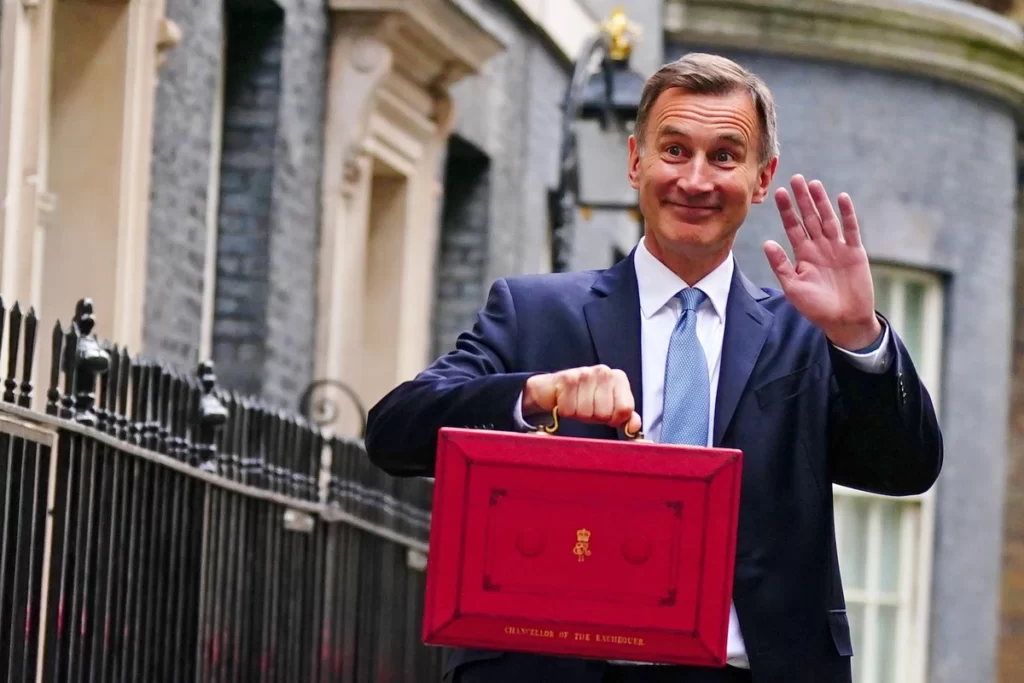Jeremy Hunt is poised to introduce a 2-point (2p) reduction in national insurance rates during his budget presentation on Wednesday, March 6.
This move aims to provide voters with a pre-election incentive, although it may result in more stringent spending cuts post-election.
The UK Chancellor is gearing up to unveil the second significant decrease in employment taxes within a year. This follows his previous decision to slash national insurance rates by 2p during last year’s autumn statement.
This reduction is expected to translate to an annual saving of £450 for the average earner. When combined with last year’s cut, this amounts to a total saving of £900.
However, the Chancellor is contemplating additional public spending cuts post-election as a means to offset the tax reduction. Economists caution that such measures could strain public services.
In recent weeks, Jeremy Hunt and Prime Minister Rishi Sunak have been actively seeking avenues to implement a tax cut of a similar magnitude to last year’s announcement.
This strategy aims to bolster the dwindling poll ratings of the Conservative Party in what will be their final budget before facing an election.
While some Conservative Members of Parliament advocated for a focus on reducing income tax—a move perceived as more comprehensible to the majority of voters—the Chancellor and Prime Minister pursued the national insurance cut route.
However, despite the previous national insurance reduction last year, the party’s polling deficit has widened slightly, from 19 points to 20.
Preparations are underway within Conservative circles to expedite emergency legislation following the budget announcement.
Such measures would be necessary to enact a national insurance cut, signaling the significance attached to this proposed tax reduction strategy.
Sunak promised to reduce income tax rates when he was chancellor, but Hunt reversed this in his first autumn statement in 2022 as the government scrambled to undo the damage done by his predecessor Kwasi Kwarteng’s “mini-budget” a few months earlier.
While a national insurance cut would offer significant savings to workers annually, its impact is eclipsed by the Treasury’s decision to maintain the salary thresholds for both national insurance and income tax at current levels.
Despite the potential benefit of a 2p cut in national insurance, Labour estimates that the average household would lose £1,040 per year compared to if the thresholds had risen in line with inflation.

Tax Cut And Its Consequences
According to government sources, the Office for Budget Responsibility’s recent forecasts granted the Chancellor approximately “£13 billion in spending capacity.”
However, meeting this budget would necessitate breaking the promise to reduce debt as a percentage of economic output over the next five years.
Jeremy Hunt is anticipated to unveil several revenue-generating measures on Wednesday to offset the costs of the national insurance cut. The cut is estimated at around £10 billion annually.
Various measures have been under consideration as potential revenue-generating strategies.
These include restricting tax benefits for non-domiciled individuals, implementing a levy on vaping products, raising taxes on short-term holiday rentals, extending the energy windfall tax, and hiking taxes on business-class flights.
Furthermore, the Chancellor has contemplated revising downwards the forecasts for public spending post-election.
Previously, forecasts following the autumn statement projected departmental budgets to increase by 1% above inflation annually throughout the next parliamentary term.
However, Jeremy Hunt has explored the possibility of lowering this projection to 0.75%.
Economists and experts in the public sector have cautioned against this proposal. They highlighted that such a reduction could necessitate slashing budgets for unprotected departments, including justice, local government, and the Home Office, by approximately 20% over the parliamentary term.
READ ALSO: UK’s May Elections Ruled Out





















